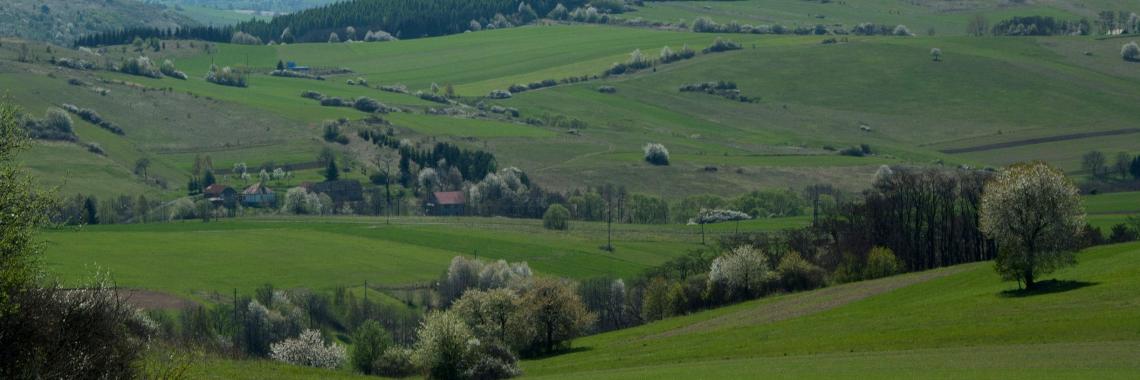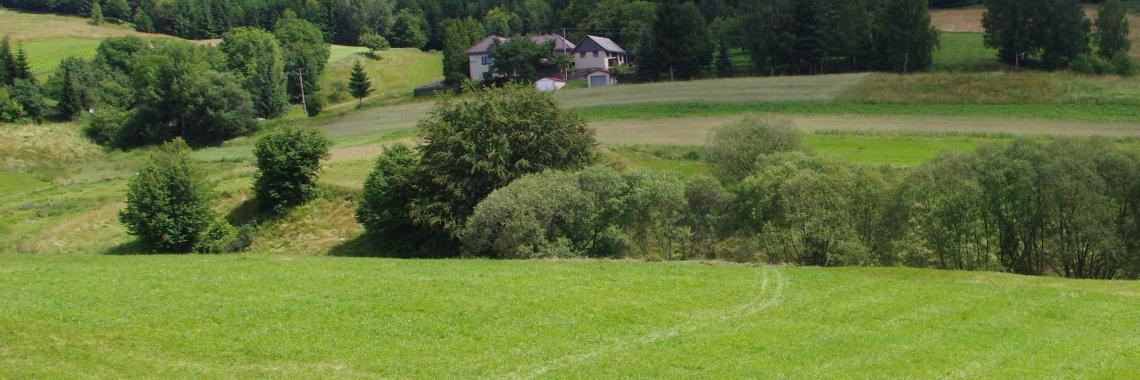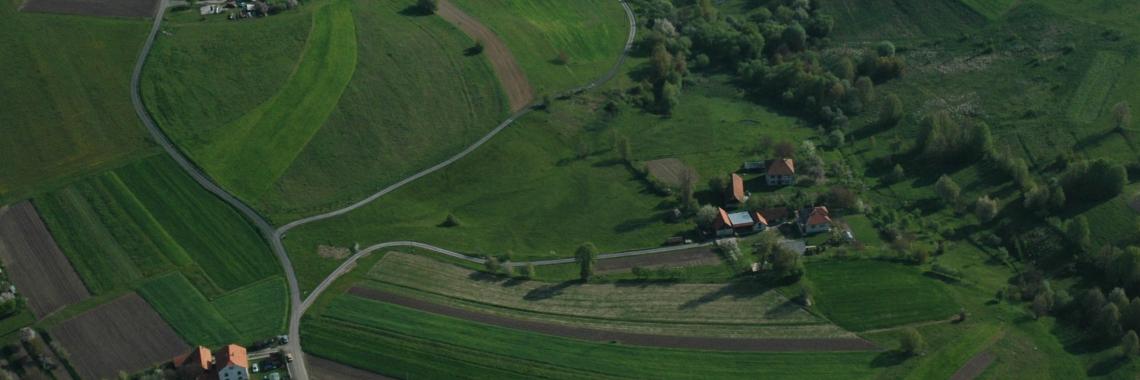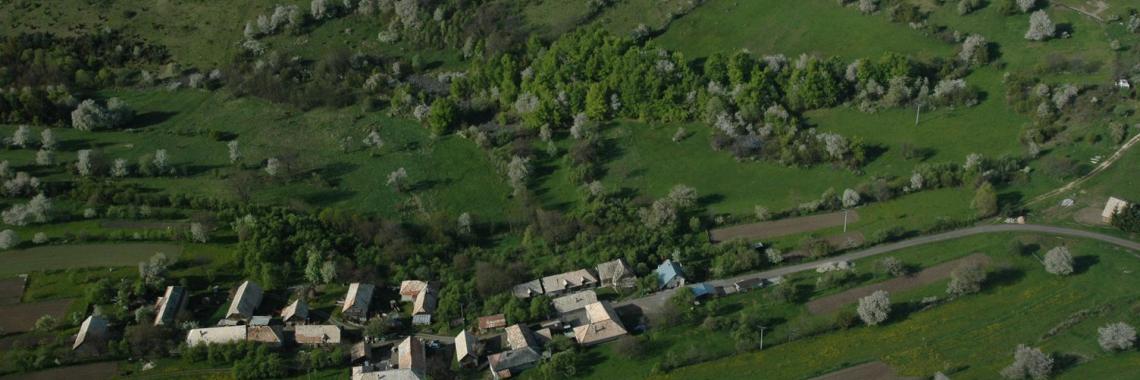Farmland in Slovakia
26.10.2017, by Bénédicte Gaillard
Research: Martina Slámová, Jana Špulerová, Marta Dobrovodská, Dagmar Štefunková; upload: Bénédicte Gaillard. The entries are still in process.
It was developed during several phases of German and Wallachian colonisation Colonisers settled mountainous regions in Slovakia. Correspondingly with agricultural activities wood-processing industry, mining or charcoal burning were typically performed in colonised regions. The earliest were colonised regions situated in lower altitudes or those related to mining of wood-processing industry, in 14th century. Colonisers deforested extensive mountainous regions that had been never colonised before. Read more in Štefunková et al. (2014).
The colonisation progress was initiated by the intensification of industrial activities in amny regions (for instance as documented Slámová et al., 2017 in Horný Tisovník cadastral district) and further by the need (demand) of new societies, communities (of different nationalities) for a free land (suitable for agricultural of forestry activities) or free territories suitable for mining (iron, golden, silver and copper ores mainly). All possible localities in river basins or valleys were urbanised during Medieval Ages (12-14th centuries) (the continuation of the Slavic settlements established between 9th-12th century) and available fertile land was cultivated in lower situated regions by landowners living here historically for decades or centuries.
DOBROVODSKÁ, M. (2006): The Development of Relations between Man and Landscape in a Historical Mountain Agricultural Landscape of Slovakia. Ekológia (Bratislava), 25(1): 38–48.
FABRICIUSOVÁ, V., SLÁMOVÁ, M., JANČURA, P. 2015. Protection of Landscape Values in an Innovative Management Approach of the Polana Biosphere Reserve. In UNISCAPE En-Route. ISSN 2281-3195, 2015, vol.1, no.1, p. 27-32.SLÁMOVÁ, M., KRČMÁŘOVÁ, J., HRONČEK, P., KAŠTIEROVÁ, M. 2017. Environmental factors influencing the distribution of agricultural terraces: Case study of Horný Tisovník, Slovakia. In Moravian Geographical Reports (IF 2.149). ISSN 1210-8812, Vol. 25, No. 1, 34-45. http://www.geonika.cz/EN/research/ENMgrArchive.htmlLIESKOVSKÝ J., KENDERESSY P., ŠPULEROVÁ J., LIESKOVSKY T., KOLEDA P., KIENAST F., GIMMI U. (2014): Factors affecting the persistence of traditional agricultural landscapes in Slovakia during the collectivization of agriculture. Landscape Ecology 29: 867–877.
LIESKOVSKÝ, J., BEZÁK, P., ŠPULEROVÁ, J., LIESKOVSKÝ, T., KOLEDA, P., DOBROVODSKÁ, M., BÜRGI, M., GIMMI, U. (2015): The Abandonment of Traditional Agricultural Landscape in Slovakia – Analysis of Extent and Driving Forces. Journal of Rural Studies, 37: 75–84.
PÁSTOR, M., SLÁMOVÁ, M., BENČAŤ, T. 2017. The distribution and biocultural value assessment of sweet chestnut (Castanea sativa Mill.) in the cadastral districts of Stredné Plachtince and Horné Plachtince (Slovakia). In Ekológia (Bratislava). ISSN 1337-947X, Vol. 36, No. 2, p. 130-145.
https://www.degruyter.com/downloadpdf/j/eko.2017.36.issue-2/eko-2017-00…
REDLI, E. 2017. Slovak farmland gains constitutional protection. Slovak Spectator. Available at: https://spectator.sme.sk/c/20553541/slovak-farmland-gains-constitutiona…
SLÁMOVÁ, M., JAKUBEC, B., HREŠKO, J., BELÁČEK, B., GALLAY, I. 2015. Modification of the potential production capabilities of agricultural terrace soils due to historical cultivation in the Budina cadastral area, Slovakia. In Moravian Geographical Reports (IF 0.876). ISSN 1210-8812, 2015, Vol. 23, No. 2, p.47–55. DOI: 10.1515/mgr-2015-0010.
SLÁMOVÁ, M., JANČURA, P., FABRICIUSOVÁ, V., BELÁČEK B., ZRNÍKOVÁ, K., PRÍDAVKOVÁ, Z., 2016. Traditional Agricultural Practices, Land Cover Diversity and Biodiversity in the Southern Podpolanie Region. In Agnoletti, M., Emanueli, F. ed. Biocultural Diversity in Europe. Environmental History 5, Springer International Publishing Switzerland, 2016, p.247-268. ISBN 978-3-319-26313-7. DOI 10.1007/978-3-319-26315-1.
SLÁMOVÁ, M., KRČMÁŘOVÁ, J., HRONČEK, P., KAŠTIEROVÁ, M. 2017. Environmental factors influencing the distribution of agricultural terraces: Case study of Horný Tisovník, Slovakia. In Moravian Geographical Reports (IF 2.149). ISSN 1210-8812, Vol. 25, No. 1, 34-45. http://www.geonika.cz/EN/research/ENMgrArchive.html
ŠPULEROVÁ, J., PETROVIČ, F. (2011): Historical Agricultural Landscape as a Subject of Landscape Ecological Research. Hrvatski Geografski Glasnik, 73(2): 155–163.
ŠPULEROVÁ, J., DOBROVODSKÁ, M., ŠTEFUNKOVÁ, D., PISCOVÁ, V., PETROVIČ, F. (2014): Evolution of the Traditional Agricultural Landscape of Slovakia. In: Efe, R., Ozturk, M. [eds.]: Environment and Ecology in Mediterranean Region II (pp. 133–146). Newcastle upon Tyne, Cambridge Scholars Publishing.
ŠTEFUNKOVÁ, D., PISCOVÁ, V., PETROVIČ, F. (2014): Evolution of the Traditional Agricultural Landscape of Slovakia. In: Efe, R., Ozturk, M. [eds.]: Environment and Ecology in Mediterranean Region II (pp. 133–146). Newcastle upon Tyne, Cambridge Scholars Publishing.
Farmland is located mainly in mountainous regions of Slovakia and corresponds with traditionally used landscapes that were colonised between 14th -17th centuries and land use was intensive in the past. Currently, extensive land use prevails and many regions with farmland suffer from abandonment.
In some regions, for instance Hriňová (the Southern Podpoľanie region) traditional agricultural practices progressively increase and the landscape is intensively used. In the Southern Podpoľanie regions, people are aware of benefits from the UNESCO Biosphere that is in the vicinity of the landscape they cultivate and they voted in the local referendum (organised by the official body of the BR Poľana, 2015) to become a part of the BR transitional zone.
These systems were multifunctional in the past as well as today; represent a mixed land use system were multifunctional activities on farms are practised. The multifunctionality results from natural conditions that are not suitable for agricultural activities (less fertile soils than in lowlands or intramountain basins or river valleys; cold and long winter season; wet and cold summer and other reasons). In the past these systems were sometimes intensively cultivated but currently, extensive cultivation prevails. Typical are closed or semi-closed mixed land cover structures of meadows, pastures and ploughland as well as opened extensive pastures are common. Hedges were built of stones or trees were planted on boarders of private plots.
The main factor influencing the location of the farmland is an altitude and historical reasons of the farmland development in Slovakia during several German and Wallachian colonisation waves. Farmland typically occur here above 400 m a.s.l. In higher altitudes prevail cambisols –typical forest soils – as well as this soil type is common in agricultural landscape of farmland (see more in Slámová et al., 2015).
- In Slovakia abandonment (depopulation, migration of inhabitants to foreign or cities) causes vanishing of many valuable farmlands.
- Farmland is shrinking, anyway thanks to active residents and stakeholders initiatives (cadastral area of Hriňová – see Fabriciusová et al., 2015) the landscape is improving. In many regions of the North-eastern Slovakia, or central Slovakia the cultural landscape has undergone degradation due to natural successive processes and has been transforming into forests, in many cases, currently, without any possibility of the cultural landscape revitalisation and reforestation is expected as adequate land use management for the current socio-economic situation in some regions in Slovakia (see Slámová et al., 2017).
Differences of land use or in architectural features of folk houses or other agricultural buildings are regionally specific. Generally, we can say that farmland in Slovakia is related to the type of cultural landscape where scattered settlements (farms) prevail and land cultivated by traditional agricultural practices has persisted here locally.
Farmland in Slovakia is typically related to mountainous regions in an altitude above 400 m a.s.l. and common are mixed agricultural activities depending on regional habits, as cattle breeding for instance – somewhere is typical sheep (the Low Tatras Mts., Orava Region, etc.) and somewhere cows (for instance Podpoľanie region, etc.).
Farmland is well known by public and recently agri-tourism has become more popular for the wide public. Farmland is important also from the natural conservation point of view due to existence of various biotopes related to extensive and diverse land use forms and in European context are these areas understood as High Nature Value Farmlands (See an article Pástor et al., 2017). Many programs running under the audience of the state nature conservation bodies implement sustainable management in European biotopes of nationally protected natural sites and biotopes.
Small and middle sized farms with valuable cultural landscape in surroundings of variable land use (in highlands prevail pastures and meadows, in uplands and rolling lands prevail ploughlands and meadows, agricultural terraces occur on slopes locally).
























